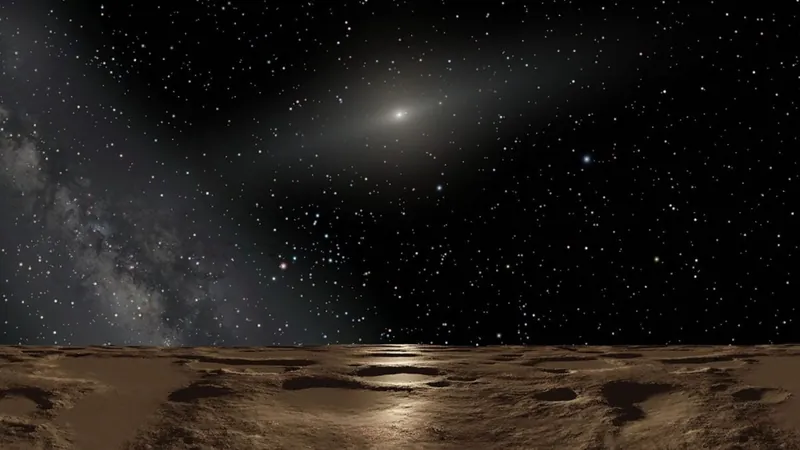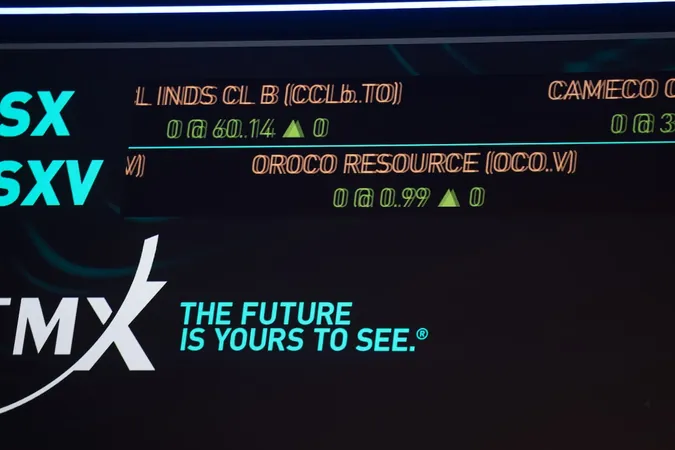
Uncharted Space Awaits! New Propulsion Tech Could Reach Mysterious Sedna in Just 10 Years
2025-07-01
Author: Amelia
A Distant World Beckons
Back on November 14, 2003, astronomers made a groundbreaking discovery: a distant object orbiting the Sun, which they named Sedna—after the Inuit goddess of the ocean. This cold, reddish dwarf planet is an enigma, wandering billions of miles from the Sun in a staggering 10,000-year orbit. With its next approach scheduled for July 2076, astronomers are gearing up for an unprecedented mission to unlock the secrets of this distant world.
Revolutionary Propulsion Concepts
A team from Italy has proposed an ambitious concept that could see a spacecraft reach Sedna in as little as seven to ten years, harnessing pioneering propulsion technology. In their recent paper published on arXiv, they introduce two cutting-edge concepts: a nuclear fusion rocket and an innovative solar sailing approach. These technologies promise to slash travel time to Sedna by more than 50%, offering scientists a rare chance to delve into the solar system's origins and the elusive Oort Cloud.
The Loneliness of Sedna
When first spotted, Sedna was a staggering 8 billion miles from the Sun—contrast that with Pluto, which is a mere 3.7 billion miles away. Sedna belongs to the elusive group known as Trans-Neptunian objects, orbiting far beyond Neptune. Its orbit is highly eccentric—at its furthest, it drifts 84 billion miles away from the Sun, approximately 900 times the distance from the Earth to our star. During its closest approach, Sedna rests at 7 billion miles, still a cosmic distance but close enough for a spacecraft to visit before it slips back into oblivion.
Challenging the Status Quo
While spacecraft like Voyager 1 and 2 have traveled incredible distances since their 1977 launches, reaching Sedna with current technology would typically require decades. Estimates suggest an arduous journey of 20-30 years, utilizing gravity assists from planets like Venus and Jupiter. However, the innovative team proposes alternative propulsion methods that could revolutionize space travel.
Fusion-Powered Dreams
One of the proposed technologies is the Direct Fusion Drive (DFD), currently in development at Princeton University’s Plasma Physics Laboratory. This fusion-powered rocket engine has the potential to deliver both thrust and electrical energy through controlled nuclear fusion, significantly outpacing traditional chemical rockets. According to the researchers, the DFD offers an exciting new avenue for deep-space exploration, provided they can overcome challenges like plasma stability and radiation resilience.
Harnessing the Power of Light
The second concept takes inspiration from solar sails, which are designed to harness sunlight for propulsion. These sails could be enhanced by materials that release propulsive molecules upon heating, a process called thermal desorption. By leveraging Jupiter's gravity assist, this solar sail could theoretically reach Sedna in just seven years, benefiting from continuous acceleration without the burden of heavy fuel.
A Mission of Discovery
Although the solar sailing mission offers quicker transit, it would only permit a flyby of Sedna, while the DFD could potentially allow for a deeper exploration by entering orbit around the dwarf planet. Whichever method is chosen, this expedition promises to yield unprecedented insights into the uncharted territories of our solar system, paving the way for humanity's next big leap into the cosmos.









 Brasil (PT)
Brasil (PT)
 Canada (EN)
Canada (EN)
 Chile (ES)
Chile (ES)
 Česko (CS)
Česko (CS)
 대한민국 (KO)
대한민국 (KO)
 España (ES)
España (ES)
 France (FR)
France (FR)
 Hong Kong (EN)
Hong Kong (EN)
 Italia (IT)
Italia (IT)
 日本 (JA)
日本 (JA)
 Magyarország (HU)
Magyarország (HU)
 Norge (NO)
Norge (NO)
 Polska (PL)
Polska (PL)
 Schweiz (DE)
Schweiz (DE)
 Singapore (EN)
Singapore (EN)
 Sverige (SV)
Sverige (SV)
 Suomi (FI)
Suomi (FI)
 Türkiye (TR)
Türkiye (TR)
 الإمارات العربية المتحدة (AR)
الإمارات العربية المتحدة (AR)